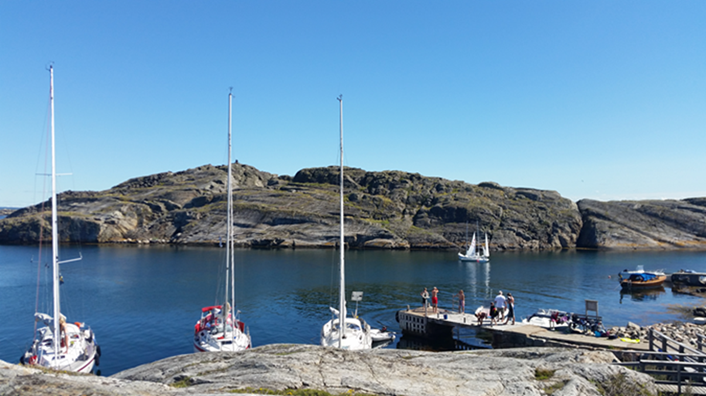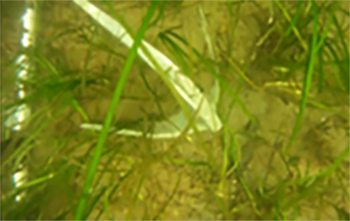
Having your own boat makes it easier to reach fine bathing spots and beaches that are not located on the mainland. However, such recreational boating can also affect our coasts and seas. A new doctoral thesis highlights how recreational boat owners can use the sea more sustainably.
Studies in the new thesis show there is a connection between the number of bottom-anchoring boats and the number of anchor traces on soft bottoms. Furthermore, as anchoring takes place where there are important and sensitive species (e.g. eelgrass), there can be consequences for ecosystems and environments.
“The anchors we traditionally use dig into the sediments. Thus, they can destroy eelgrass roots and tear up the plants. In the long term, this can result in reduced eelgrass distribution. In its turn, this can have consequences for, amongst other species, cod. Cod use eelgrass as nursery areas,” explains thesis author Jenny Egardt, the University of Gothenburg.
The thesis also shows that the concentration of the long banned tributyltin (TBT, a biocide used in antifouling paint) is above the limit value in the studied sediments.
 “This is noteworthy. The use of TBT on recreational boats has been banned in Sweden since 1989,” comments Jenny.
“This is noteworthy. The use of TBT on recreational boats has been banned in Sweden since 1989,” comments Jenny.
Notwithstanding the negative impact from recreational boats, she is positive and believes that boat owners’ increased knowledge can lead to changed behaviour and a more sustainable use of natural amenities.
“After all, if you’re unaware of the impact you’re having through, for example, anchoring or use of boat paints, it is difficult to know that you should be acting differently. Through information and increased knowledge, we can continue the recreational use of our coastal areas while reducing our impact and ensuring we maintain our wonderful environment,” says Jenny.
She suggests that recreational boat owners should avoid bottom anchoring, especially in areas where eelgrass is  visible on the bed. Instead, they should reduce negative impact by anchoring alongside islands.
visible on the bed. Instead, they should reduce negative impact by anchoring alongside islands.
“We should also review whether bottom paint is necessary, or if we could use other methods. Hull covers and brush washing are examples. To reduce fuel emissions, we could also switch to alkylated petrol,” states Jenny.
 Listen to the podcast in which Jenny Egardt takes part:
Listen to the podcast in which Jenny Egardt takes part:
https://soundcloud.com/user-594570214/5-fritidsbatarna-och-miljon.
Contact:
Jenny Egardt, the Department of Biological and Environmental Sciences, the University of Gothenburg: telephone +46 (0)31 786 2935; mobile +46 (0)704 79 04 39; email jenny.egardt@bioenv.gu.se.
Thesis title: Impacts of Recreational Boating in Coastal Seascapes and Implications for Management.
Link to the thesis: https://gupea.ub.gu.se/handle/2077/55901.
Supervisors: Per Nilsson, Ingela Dahlöf.
Photos
Bottom-anchored boats at Ursholmarna, Kosterhavet (photographer, Jenny Egardt).
Litter from the outdoor life can also be found in the shallows – here a disposable barbecue (photographer, Jenny Egardt).
Bottom anchoring occurs in the national park’s eelgrass – this can damage important habitats (photographer, Jenny Egardt).
Jenny Egardt (photographer, Albin Dahlin).